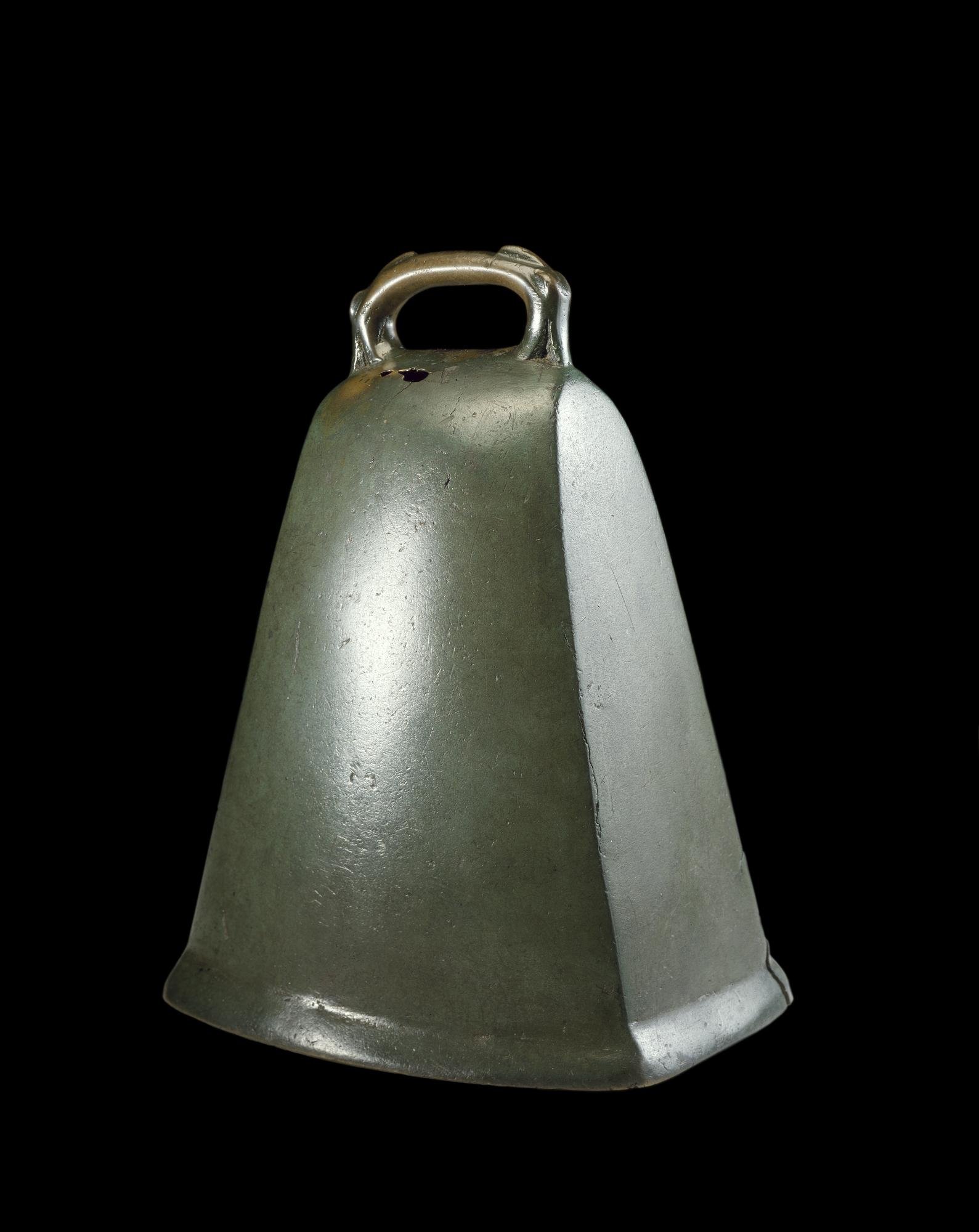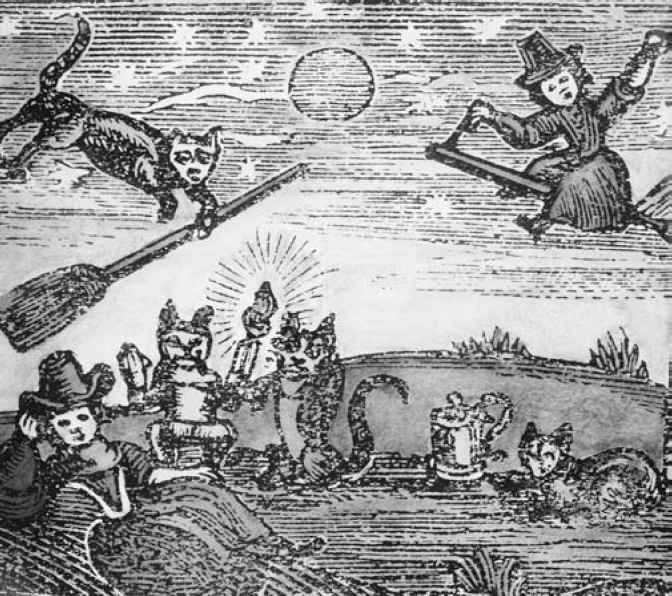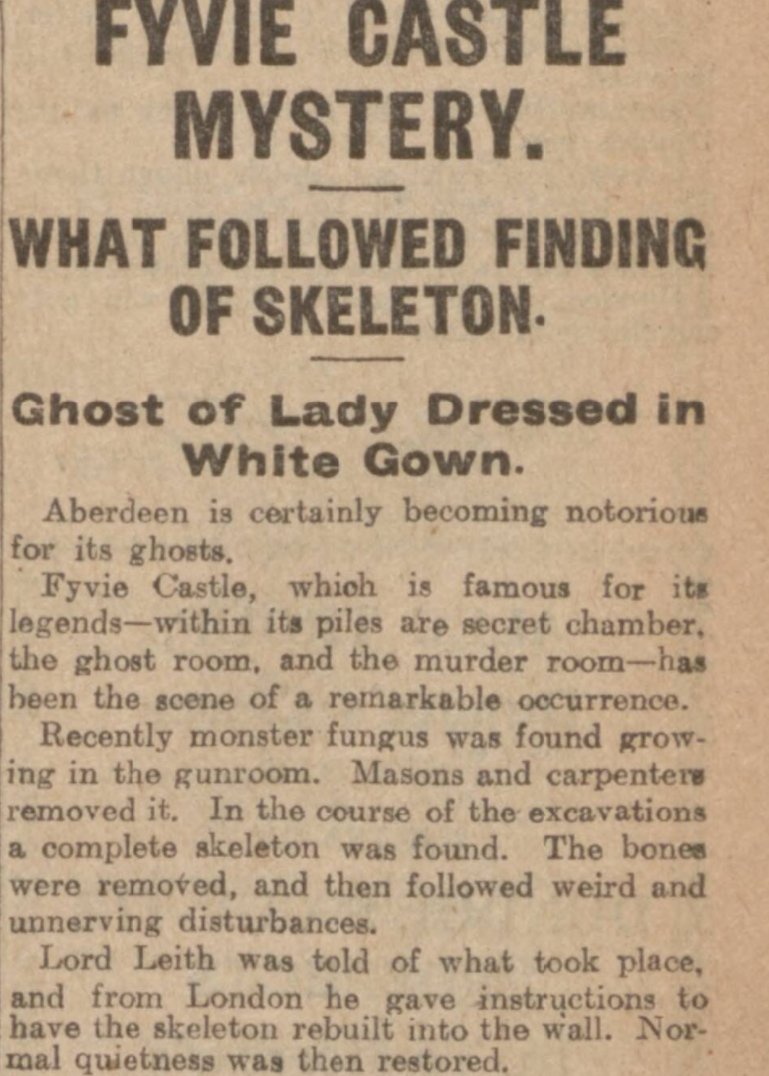In 1597, Aberdeenshire woman Ellen Gray was accused of using sorcery, witchcraft, and charms on farm worker Thomas Reddoch “so that his wand nevir lay doune”. Thomas apparently later died from his condition.

In 1597, Aberdeenshire woman Ellen Gray was accused of using sorcery, witchcraft, and charms on farm worker Thomas Reddoch “so that his wand nevir lay doune”. Thomas apparently later died from his condition.

St Fillan had a pet bell that would fly to him when called. It was said to have flown from Strathfillan to Scone for the coronation of James IV. It flew by a soldier who shot it with an arrow, which is how it came to have a hole in it.

In August 1413, a 9-day windstorm smothered the village of Forvie under massive sand dunes, leaving only the kirk visible. Eventually abandoned, Forvie was said to have been cursed by three sisters who were sent off to die in a leaky boat in 1391.

Yf evyr maidenis malysone
Did licht upon drie lande
Lay nocht be funde of Forvy’s glebys,
Bot thystle, bente, and sande.(translated)
The Curse of Forvie
If ever maidens accursed,
Do alight upon dry land,
Let nothing be found in Forvie’s fields,
But thistles, marram, and sand!
Anderson, W. (1873) Howes o’ Buchan: being notes, local, historical, and antiquarian, regarding the various places of interest along the route of the Buchan Railway. Sentinel Office, Peterhead pp.96-97
Sherriffs, E. (2017) Life in medieval Forvie. Foveran Community Newsletter. Issue 148. pp. 26-27
Traditionally in Strathspey, A witch had 5 options for transformation, depending on what they had to do that day. A hare, A cat, A raven, A magpie, or a medium-sized flattish stone.

A Stone: The witch is supposed to transform into a stone and wiggle into the ground right in the path of the farmer’s plough. This causes a jam between the coulter (4) and the sock (5) and makes the plough skid above the surface, leaving a patch of fallow soil called the bauk.

The other roles explained:
A hare: for sneaking around the farm and fields.
A cat: for getting access into people’s homes.
A raven: for travelling long distances (like to conferences, demonic AGMs etc.)
A magpie: for nipping round to a friend’s house to talk witchy stuff.
Sarah Dalrymple, Countess of Dumfries (1654-1744) was said to have had suffered from a “distemper” that caused her to fly across the room and around the garden. Was it witchcraft? None could say. Was she definitely 100% flying about? Robert Wodrow was absolutely certain.


That Sarah could fly was apparently common knowledge at the time and after her death. In a pasquil (a satirical poem) lampooning the Stairs family, a poet had this to say about her:
The airie fiend, for Stairs hath land in Air,
verse from “Satyre on the Familie of Stairs”
Possess another daughter for ther share,
Who, without wings, can with her rumple flye.
No middling-foull did ever mount so high;
Can skip o’er mountains, and o’er steiples soare,
A way to petticoats ne’re known before.
Her flight’s not useless, though she nothing catch;
She’s good for letters when they neid despatch.
When doors and windows shutt, cage her at home,
She’le play the shittlecock through all the roume,
This high flown lady never trades a stair,
To mount her wyse Lord’s castles in the air–
Maidment, J. (ed) (1868) A Book of Scotish Pasquils 1568-1715 [sic]. William Paterson, Edinburgh. pg.179
Wodrow, R. (1842) Analecta: or, Materials for a history of remarckable providences; mostly relating to Scotch ministers and Christians. Vol. 2. Maitland Club, Glasgow pg.4
Thank you to @Flitcraft for letting me know about the pasquil.
Pro tip from Badenoch: If you meet a ghost that won’t show its face, turn up one of your coat cuffs. It will be frozen, unable to disappear, and its identity will be made clear to you.

In Jan 1920, a “monster fungus” appeared on a wall in Fyvie Castle. Workmen removed the fungus and wall and found a woman’s skeleton. After, staff were plagued by noises and “a white ladye”. The castle’s laird had the bones dug up and placed back in the wall.

Dundee Courier. 15 January 1920. pg. 5.